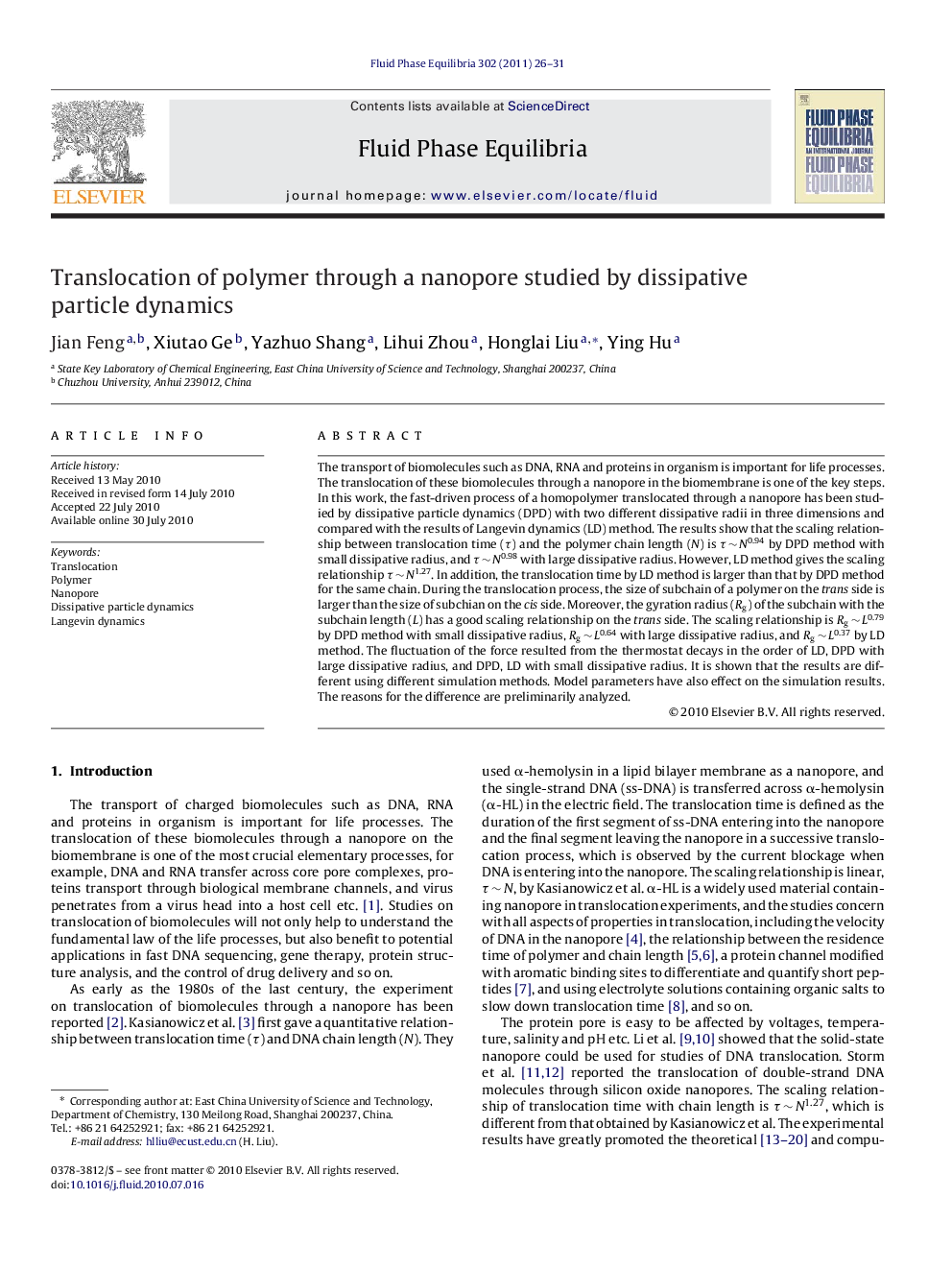| Article ID | Journal | Published Year | Pages | File Type |
|---|---|---|---|---|
| 202287 | Fluid Phase Equilibria | 2011 | 6 Pages |
The transport of biomolecules such as DNA, RNA and proteins in organism is important for life processes. The translocation of these biomolecules through a nanopore in the biomembrane is one of the key steps. In this work, the fast-driven process of a homopolymer translocated through a nanopore has been studied by dissipative particle dynamics (DPD) with two different dissipative radii in three dimensions and compared with the results of Langevin dynamics (LD) method. The results show that the scaling relationship between translocation time (τ) and the polymer chain length (N) is τ ∼ N0.94 by DPD method with small dissipative radius, and τ ∼ N0.98 with large dissipative radius. However, LD method gives the scaling relationship τ ∼ N1.27. In addition, the translocation time by LD method is larger than that by DPD method for the same chain. During the translocation process, the size of subchain of a polymer on the trans side is larger than the size of subchian on the cis side. Moreover, the gyration radius (Rg) of the subchain with the subchain length (L) has a good scaling relationship on the trans side. The scaling relationship is Rg ∼ L0.79 by DPD method with small dissipative radius, Rg ∼ L0.64 with large dissipative radius, and Rg ∼ L0.37 by LD method. The fluctuation of the force resulted from the thermostat decays in the order of LD, DPD with large dissipative radius, and DPD, LD with small dissipative radius. It is shown that the results are different using different simulation methods. Model parameters have also effect on the simulation results. The reasons for the difference are preliminarily analyzed.
